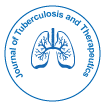Evaluation of Quality of Care in DOTs Centers under National Tuberculosis Control Program in Dhaka City
Received Date: Oct 23, 2017 / Accepted Date: Nov 10, 2017 / Published Date: Nov 17, 2017
Abstract
Introduction: Many countries faced problem with inaccessibility to the facilities of TB treatment, which ended up with limited success in controlling TB. The problem has been addressed through the integration of national tuberculosis programme with general health services, which is implementation of internationally recommended TB control strategy, DOTs (Directly Observed Therapy with short course chemotherapy) strategy. In Bangladesh this initiative has largely been taken by some established NGOs with which the government is collaborating. The programme has been being implemented at the field level for more than two decades. In 2014 we assessed the quality of care in the DOTs centers by measuring the facilities and programme outcomes.
Materials and methods: We collected both providers’ and patients’ perspectives by employing pretested questionnaires. To draw the providers’ perspectives, the field team interviewed 92 health workers and for patients’ perspectives the field team interviewed 357 patients from the selected DOTs centers. We presented data by calculating the frequency of each assessment indicators.
Results: We observed that 59% centers had staining facilities at the center. In 99% centers they had medicine available all the time. 76% patients stated that the distance between centers and their residences is <1 kilometer. 97% centers had accessible road to the centers. 76% providers knew consequences of treatment failure. 31% patients knew the mode of transmission. 1% patients knew the duration of treatment. 73% patients knew consequences of treatment failure.
Conclusion: Almost all the DOTs centers ensured availability of medicine. Most of the DOTs centers are located near to the enlisted patients’ residences and are accessible through public transportation. However, knowledge of TB transmission and fate is unclear among both the providers and the patients. New programme approach could be explored to improve the knowledge level of controlling tuberculosis to optimum.
Keywords: Quality of care; Tuberculosis; DOTs; Knowledge
Citation: Bulbul T (2017) Evaluation of Quality of Care in DOTs Centers under National Tuberculosis Control Program in Dhaka City. J Tuberc Ther 1: 107.
Copyright: © 2017 Bulbul T. This is an open-access article distributed under the terms of the Creative Commons Attribution License, which permits unrestricted use, distribution, and reproduction in any medium, provided the original author and source are credited.
Share This Article
Open Access Journals
Article Usage
- Total views: 3511
- [From(publication date): 0-2017 - Apr 01, 2025]
- Breakdown by view type
- HTML page views: 2718
- PDF downloads: 793
